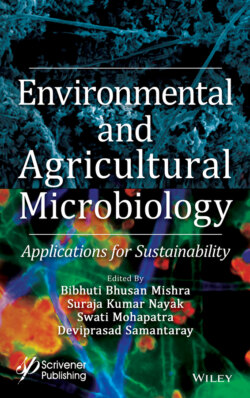Читать книгу Environmental and Agricultural Microbiology - Группа авторов - Страница 33
2.1 Introduction
ОглавлениеChromium is a silver-gray colored, lustrous, hard, and brittle metal. N. L. Vauquelin discovered Chromium in 1798 from the Siberian red ore (crocoites) [1]. South Africa and Zimbabwe account for 85% and 10% of total earth’s chrome ore reserve (7,500 million tons). In addition, 2.5% the world’s chromium resources are found in India (i.e., about 186 million tons). India accounts for around 97% of world chromium reserve and it is mostly stuffed in Sukinda ultramafic belt of Odisha [2]. Chromium is found in variable valence forms ranging from −2 to +6, and the most stable forms are Cr(VI) and Cr(III) which are amalgamated with oxygen. Chromium oxide (CrO3) and chromium hydroxide [Cr(OH)3] are two different forms of Cr(III) while Cr(VI) is available in the form of dichromate (Cr2O72−), chromate (CrO42−) or hydro-chromate (HCrO4−). Along with various industrial applications, it is also attributed with some strategic importance in the field of defence, aero-space, and aviation [2]. Mertz (1969) [3] reported that chromium (III) is responsible for the glucose tolerance factor. Cr(III) is necessary for the metabolism of carbohydrate in human and animal nutrition [3, 4]. Intake of a large amount of Cr(III) beyond permissible limit may also responsible for many diseases like lung’s cancer [5, 6]. Cr(III) is quite different from Cr(VI) on the basis of their mobility, bioavailability, and toxicity. It has been observed that the hexavalent form of chromium is more soluble and toxic than the trivalent form. Daily consumption/intake of Cr(VI) beyond the permissible limit present in the contaminated water and food products results in the entry of chromate into the human body [7, 8]. Serious environmental complicacies have been observed due to the rampant usage of toxic forms of chromium which cause vitiation in soil and water. Open cast mining of chromium cause the assemblage of chromite ores and waste rock materials which are further discarded in to the open ground without considering its effect on the environment [9]. This toxic metal percolates to the groundwater systems through rain and enters into the surface water bodies through soil run off. Hence, it is the dire need of the time to ameliorate the toxicity of the metal using some eco-friendly and economic sources. In this regard, the present scenario is highly demanding a suitable biological alternative which can also overcome the dangerous side effects of expensive chemical treatments.
Chromium toxicity can be lessened using biosorbents prepared from various microbes like bacteria, fungi, yeasts, moulds, and algae [10]. However, involvement of microalgae for the reduction of toxicity is highly recommendable due to the availability of some exclusive properties in them. Presence of different binding groups, polysaccharides, proteins, and vacuoles collectively provide a higher binding affinity with the metal and, hence, facilitate the process of bioremediation [11]. Moreover, these microbes also possess numerous advantages like high efficiency in eliminating heavy metals even from very low concentration, cheaper cost, high adsorbing capacity, larger surface area, greater mucilage area, and high binding affinity with simple nutrient requirement. Besides these, they are capable of growing in both aquatic and terrestrial area. In diverse ecosystems, algae play significant roles for which they are regarded as cosmopolitan microorganisms. They can synthesize low molecular weight thiol-peptides and reduced glutathione and phytochelatin when grown in a heavy metal polluted environment [12].
Figure 2.1 The chromium cycle.
